Can I eat soy on the low FODMAP diet? This is a great question and one we hear all the time. And the answer is, yes, no and depends. What we can say definitively is that the low FODMAP diet is not soy-free.
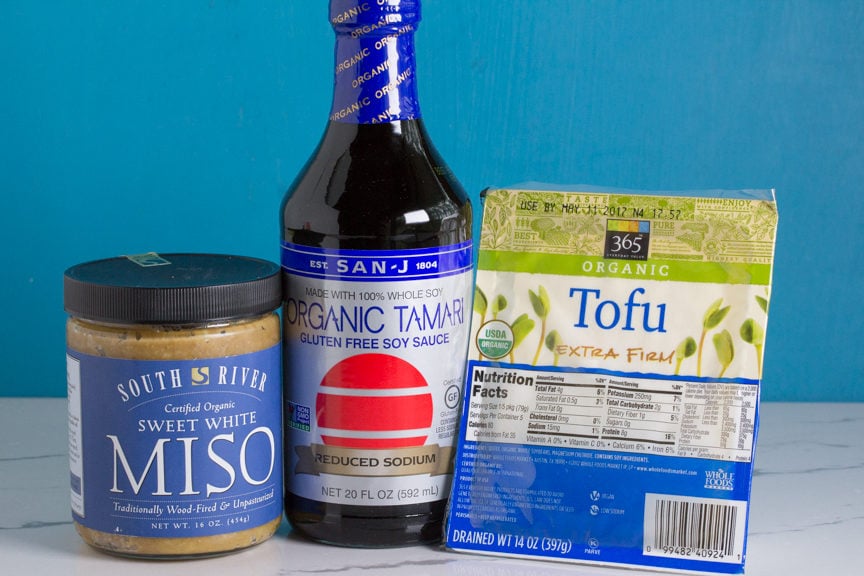
As with many attributes of the low FODMAP diet we have to pay attention to detail.
We are going to break it down for you, step-by-step, so that you will be well equipped with the info you need to seek out which soy products are low FODMAP, and appropriate during the Elimination Phase, and which to avoid.
- Maturity of Soybeans & Processing Counts
- Low FODMAP Soy Products
- Firm and Extra Firm Tofu
- Silken Tofu
- Fresh or Frozen Edamame in the Pod
- Soy Sauce
- Shoyu
- Tamari
- Sweet Soy Sauce/Ketjap/Kecap Manis
- Soybean Oil
- Soy Lecithin
- Soy Protein Isolate
- Soy Milk Made from Soy Protein or Soy Protein Isolate
- Soy Milk Made from Soybeans, Hulled and Unhulled
- Soy Yogurt Made from Soy Protein or Soy Protein Isolate
- Miso
- Tempeh
- Douchi (Fermented Black Soybean)
- High FODMAP Soy Ingredients
- Untested Soy Products
- Low FODMAP Recipes To Enjoy Featuring Soy
Maturity of Soybeans & Processing Counts

The reason why some are okay and some are not is because the maturity of the beans and/or the manufacturing process reduces the FODMAPs in soybeans and some soy products.
Related Articles: Soy and The Low FODMAP Diet and Are Soy Sauce and Tamari Low FODMAP?
By the way, soy is sometimes listed as “soya” on labels. Same thing with same FODMAP implications.
Low FODMAP Soy Products
This section shows you the many soy products that you can enjoy, even during the Elimination Phase.
Firm and Extra Firm Tofu
Firm and extra firm are low FODMAP as enough of the whey is drained away as the curds are pressed into the firm cakes; it is the liquid whey where most of the FODMAPs reside. Silken tofu has a very small low FODMAP serving size, as less whey is removed.
- Monash University lab testing suggests a 170 g serving of firm tofu is low FODMAP, becoming Moderate for FODMAPs at 175 g.
- FODMAP Friendly lab testing suggests a 100 g serving of firm tofu is low FODMAP.
Monash University calls these “plain” and “firm” tofu, so be aware of terminology going from their Australian perspective to U.S. labeling. FODMAP Friendly uses the “firm” tofu designation, as well.
Silken Tofu
While firm and extra firm tofu are pressed firmly and therefore the FODMAP filled whey is drained away, silken tofu (also called soft tofu) is not pressed and is, therefore, richer in FODMAPs. However, we include it in this section because it does have a low FODMAP serving, and the amount is enough to make a silky salad dressing, or to add to a smoothie.
- Monash University lab testing suggests a 39 g serving (approx. 2 Australian tablespoons) of silken tofu is low FODMAP, becoming Moderate for FODMAPs at 46 g.
- FODMAP Friendly lab testing suggests a 36 g serving of silken tofu is low FODMAP.
Fresh or Frozen Edamame in the Pod

Edamame are young soybeans in the pod. Their immature state yields a different FODMAP profile than the mature beans that are used to make soy flour, for instance.
If you are lucky enough to have access to fresh, by all means, check them out. I found the ones in the image above at our local farers market in New England. Otherwise, it is fairly easy to find frozen in natural food stores. Simply steam the pods and serve warm or room temperature sprinkled with coarse salt.
Monash has tested edamame and a low FODMAP serving of shelled pods – you are just eating the beans themselves – is ½ cup (75 g) of the beans. They become Moderate for FODMAPs (fructans) at 195 g, so there is a lot of wiggle room.
When we shelled them from fresh, ¼ cup of the actual soybeans came from 30 pods! They typically have 2 to 3 beans per pod so you can eat a lot! Relax and have a little snack.
Frozen Shelled Edamame
All the same info for this stands as in the above bullet point, however, since these come already shelled it is much easier to overdo and eat too many.
They are great tossed into soups or stir-fry dishes; just pay attention to serving size.
Soy Sauce
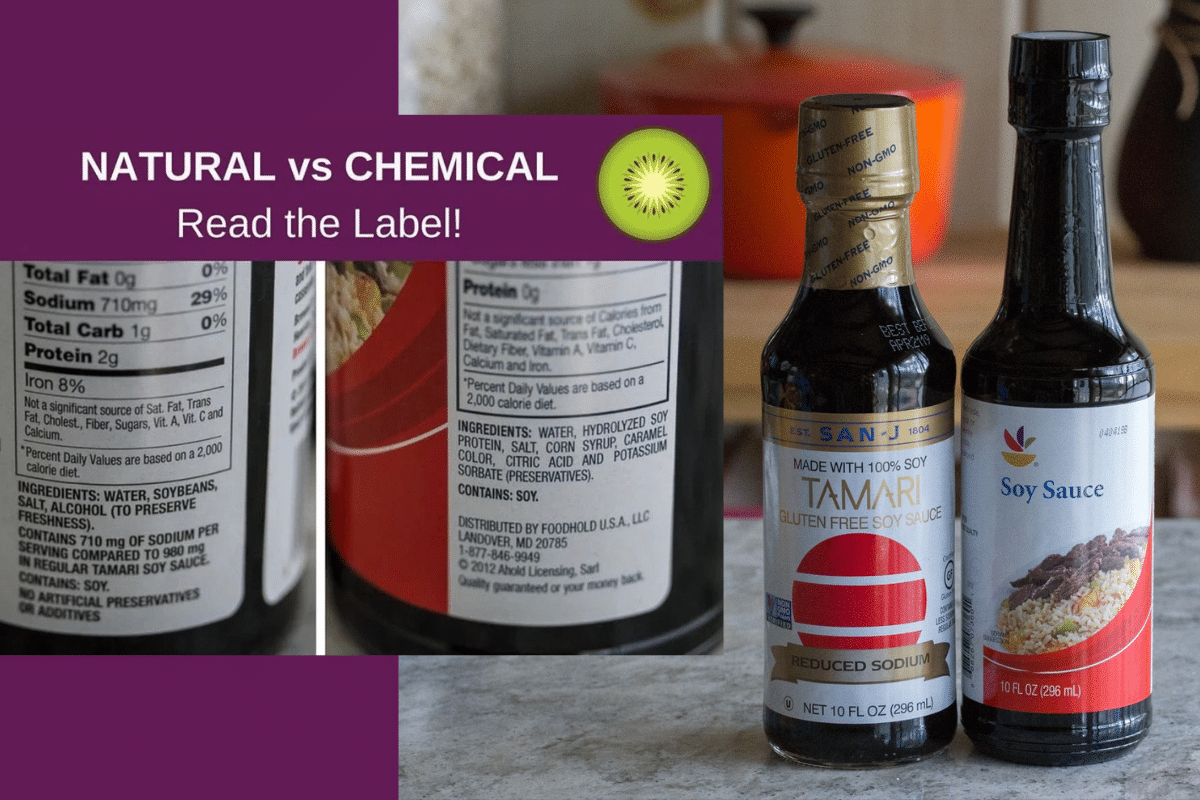
Thankfully soy sauce has been lab tested by both Monash University and FODMAP Friendly. Whatever you use, make sure it is naturally brewed for best taste.
- Monash University lab testing suggests a 2 Australian tablespoon (42 g) serving of soy sauce is low FODMAP. There is no further information and it appears that the 2 tablespoon suggestion is per Australian healthy eating guidelines.
- FODMAP Friendly lab testing shows no FODMAP content and the directions are, “Enjoy in unlimited amounts; Eat freely.”
Shoyu
Another term for soy sauce, which is made from a combination of soy and wheat. It is often thinner in texture.
Tamari
This is wheat free, often labeled as gluten-free and has a slightly thicker texture and bolder flavor. While neither shoyu nor tamari is directly addressed by Monash we suggest you could try them and see how you do.
Sweet Soy Sauce/Ketjap/Kecap Manis
This is a thick, sweet liquid soy condiment. Monash University has lab tested it and a low FODMAP serving size is 1 Australian tablespoon (20 g), becoming Moderate for FODMAPs (fructans) at 50 g.
Soybean Oil
As with all oils, the carbohydrate and FODMAP content is zero. You can enjoy oil made from soybeans.
Soy Lecithin
You might notice this ingredient listed in packaged foods and on labels for many chocolate bars. Soy lecithin is a combination of an oil and fat and is therefore considered low FODMAP even though it hasn’t been formally tested.
As far as your chocolate bars go, it is used as an emulsifier and it is used in very small qualities.
Soy Protein Isolate

FODMAP Friendly has lab tested this powdered product, which you might find as a standalone ingredient, or in protein powder products. A low FODMAP serving size is 30 g, with a max low FODMAP serve of 68.40 g.
Soy Milk Made from Soy Protein or Soy Protein Isolate
Soymilk made from soy protein, not whole soybeans, has generous low FODMAP servings of 1 cup (250 ml) per Monash and FODMAP Friendly lab testing; FODMAP Friendly shows a max serve of 3 cups (750 ml).
A U.S. based brand – 8th Continent – made with soy protein is available in some areas with limited availability and would be worth seeking out. (As of Q3 2024 we cannot source it anymore).
Soy Milk Made from Soybeans, Hulled and Unhulled

Both Monash University and FODMAP Friendly have lab tested soy milk made from soy beans. (Please note that Monash uses both grams and milliliters somewhat arbitrarily).
- Monash University has lab tested 2 different soy milks made from whole soybeans and a low FODMAP serving ranges from 30 ml (about 2 tablespoons) to 45 ml, but it does not become Moderate for GOS and fructans until about 120 ml.
- Monash University has lab tested soy milk made from hulled whole soybeans and a low FODMAP serving is 60 ml (about ¼ cup), but it does not become Moderate for GOS and fructans until ½ cup (120 g).
- FODMAP Friendly has lab tested soy milk made from whole soybeans and they state no low FODMAP serving.
Soy Yogurt Made from Soy Protein or Soy Protein Isolate
If you can find soy milk yogurt made from soy protein or soy protein isolate and NOT whole soybeans, it might be worth giving a try. Use the soy milk made with soy protein amounts as guides. Read the label for other FODMAPs.
Monash has an app entry for soy yogurt and shows a 2 tablespoon (38 g) low FODMAP serving; we assume this is made from whole soybeans.
Miso
This fermented soybean product is a classic Japanese condiment and can be used in sauces and soup.
- Monash University lab testing states miso is low FODMAP up to 12 g, but does not become Moderate for fructans until 75 g.
We measured it out for you! 12 g equals about 2 American teaspoons. Monash states it is 1 Australian tablespoon (these numbers do not match). If you are new to Miso, we highly recommend South River brand.
- FODMAP Friendly has lab tested miso as well and states a low FODMAP serving is 15g, with a max low FODMAP serve of 45 g.
Tempeh
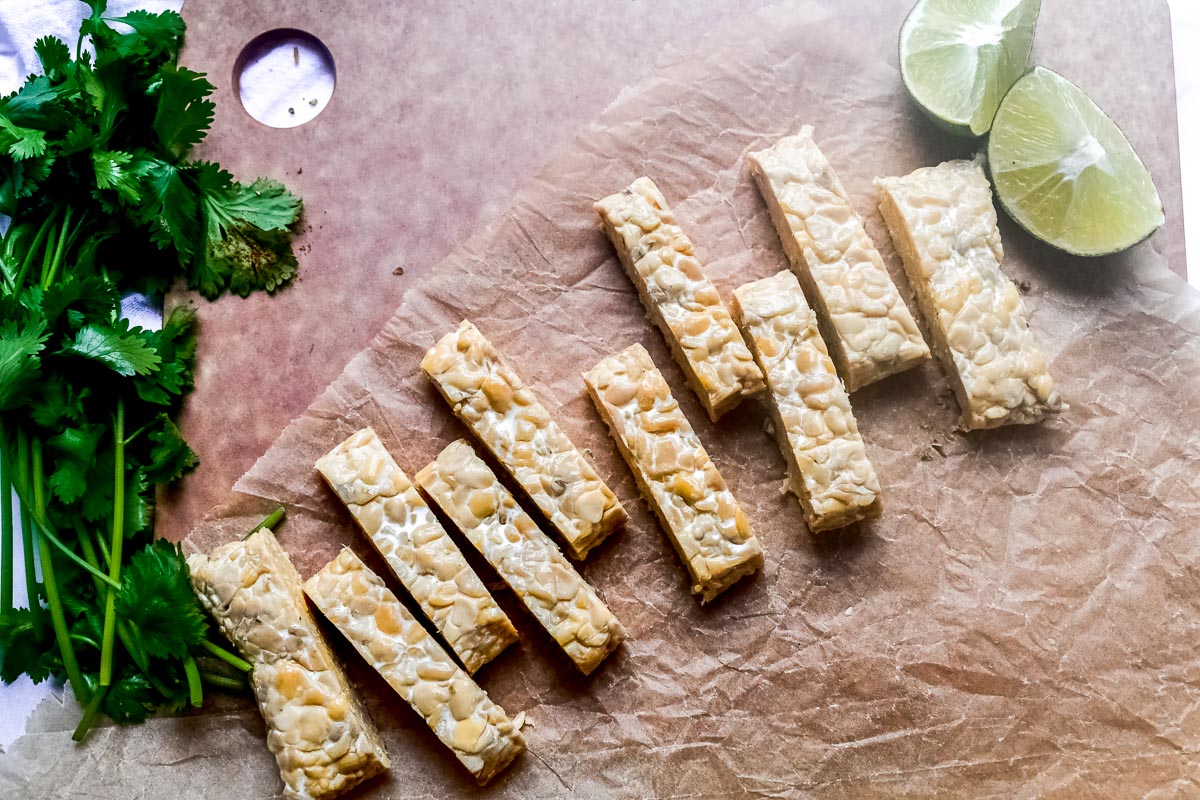
This is made from lightly fermented soybeans that have been pressed into a cake. Make sure you read labels and look for plain tempeh; many are packaged already flavored and high FODMAP ingredients might be used.
Both Monash and FODMAP Friendly have lab tested tempeh.
- Monash University lab testing states plain tempeh is low FODMAP up to 100 g. Initial lab testing showed servings higher than 220 g contain high amounts of fructans and GOS. Current lab tests show no further information beyond the 100g, which we believe is an Australian healthy eating guideline.
- FODMAP Friendly has lab tested plain, cooked tempeh and they found no FODMAPs. “Enjoy in unlimited amounts; eat freely.”
PS: 100 g of plain tempeh is a piece that is 4.5-inches by 1.5-inches by 1-inch thick (11 cm by 4 cm by 2.5cm thick).
Douchi (Fermented Black Soybean)
Monash has lab tested douchi and it is low FODMAP in 1 Australian tablespoon (15 g) portions.
High FODMAP Soy Ingredients
The following soy ingredients are generally cosidered to be high FODMAP.
Soy Yogurt Made With Whole Soybeans
Popular brands, such as Silk, are made from soymilk made from whole soybeans (label lists “Filtered Water, Soybeans”), so it is not recommended during the Elimination Phase.
Soy Flour
This is made from grinding mature dried soybeans and is, therefore, a product that is concentrated with FODMAPs. Please note that soy flour is considered high FODMAP, and yet it is within certain products that have been lab tested and certified as low FODMAP. We do not know what an exact low FODMAP serving size is. In general, consider it high FODMAP.
Kinako, which is roasted soybean flour, would likely be the same as raw soy flour, in terms of FODMAP content.
Mature Soy Beans
Mature soybeans, either dry or fresh, are high in FODMAPs. In the Monash app there is an entry for “dried, boiled, drained soya beans”, for which there is no known low FODMAP serving, and they tested down to 43 g.
Soy Nuts
This is an educated assumption on our part but soy nuts are made from mature soybeans, so we bet, once they are tested, that they will be high in FODMAPs. Best to avoid for now.
Textured Soy Protein (TVP)
Monash has lab tested TVP and there is no known low FODMAP serving size – and they have tested down to 15 g.
Untested Soy Products
These are soy ingredients that have not been lab tested and should be treated as having unknown FODMAP content. Please see our article, What If A Food Hasn’t Been Lab Tested For FODMAPs?
- Soybean sprouts
- Dark soy sauce: From the bottom of the fermentation bottle; almost as thick as molasses
- Light soy sauce: Much thinner in viscosity, and paler on color
- Mamenori (soybean paper)
- Okara: Byproduct of tofu production
- Soy cheeses and non-dairy products
Soy Product To Try
Natto is fermented soybeans and might be worth a try. The fermentation would reduce the FODMAPs; we just do not know by how much.
Low FODMAP Recipes To Enjoy Featuring Soy
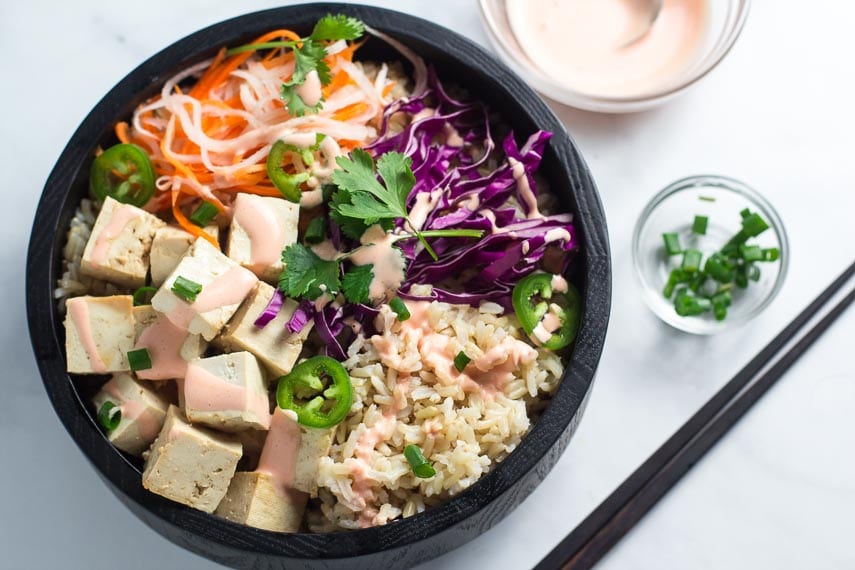


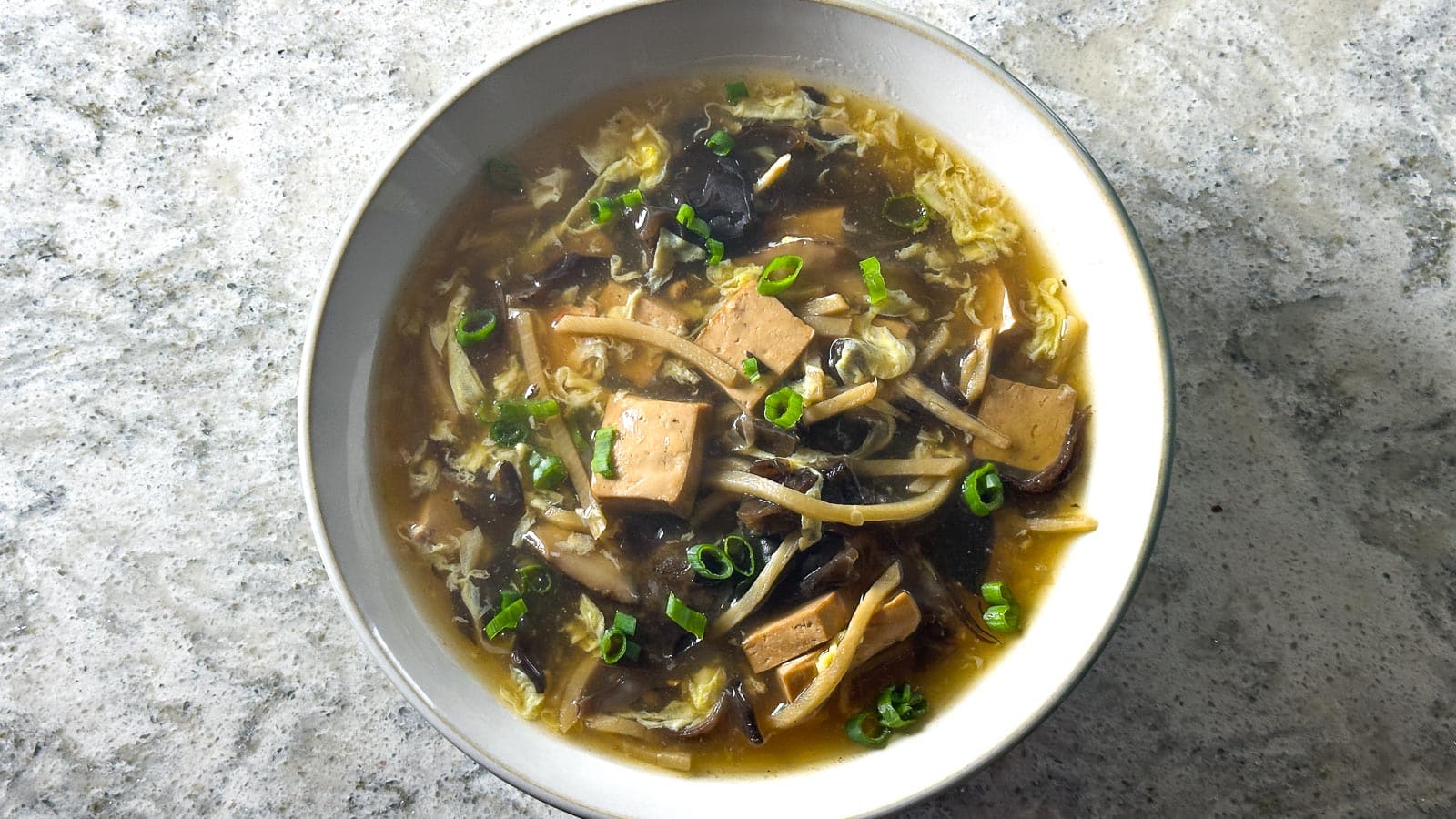


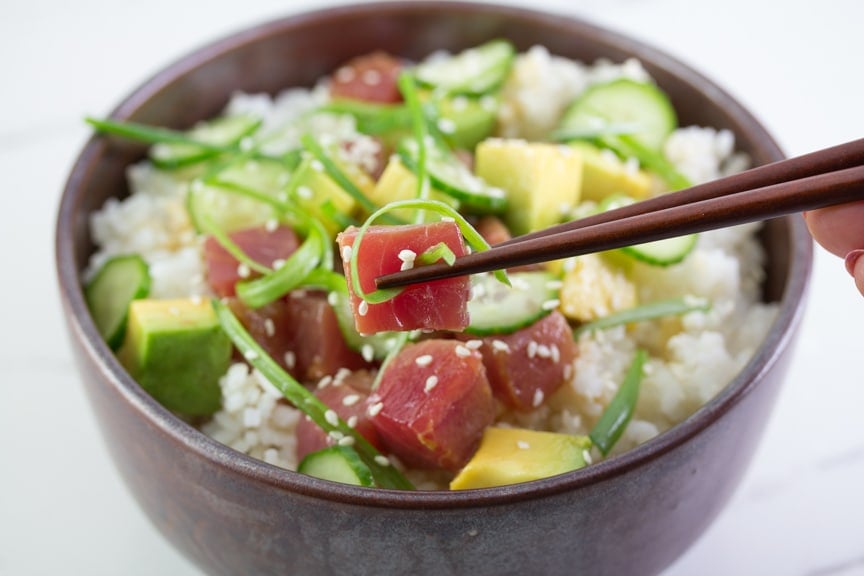
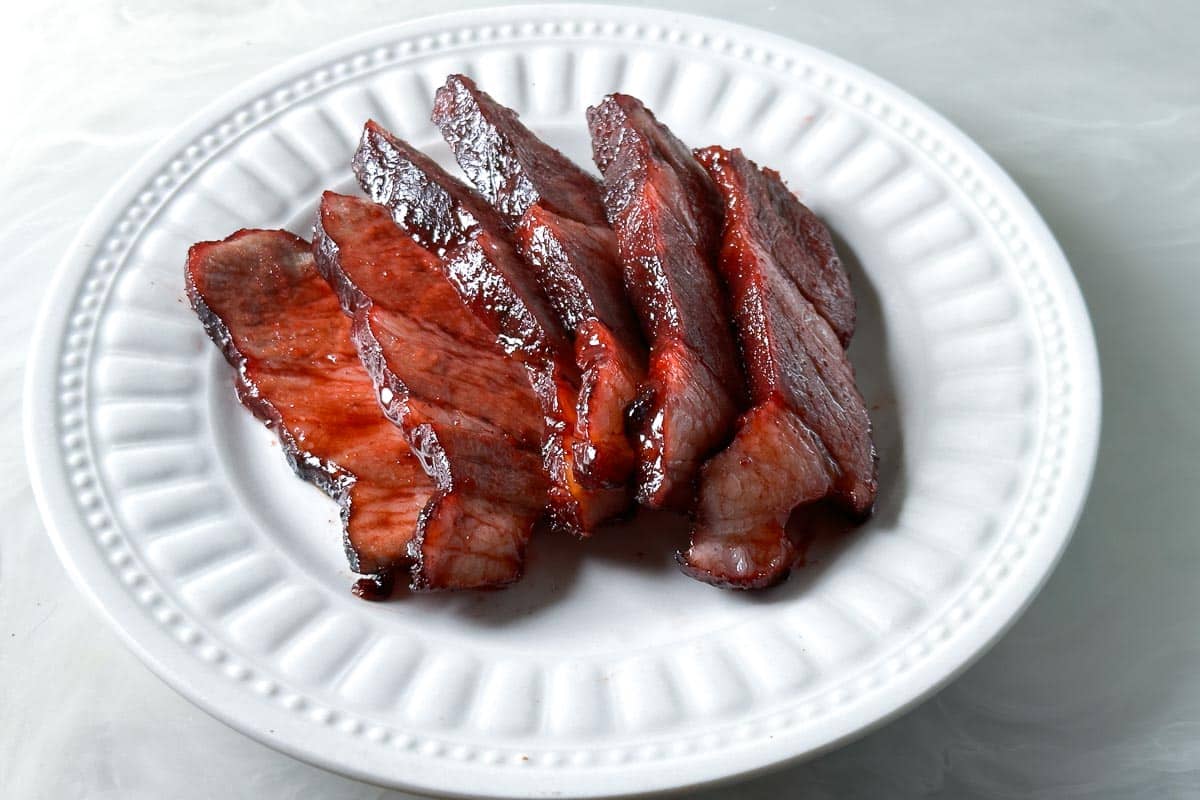
- Char Siu
- Two Mushroom Miso Soup
- And so many more!
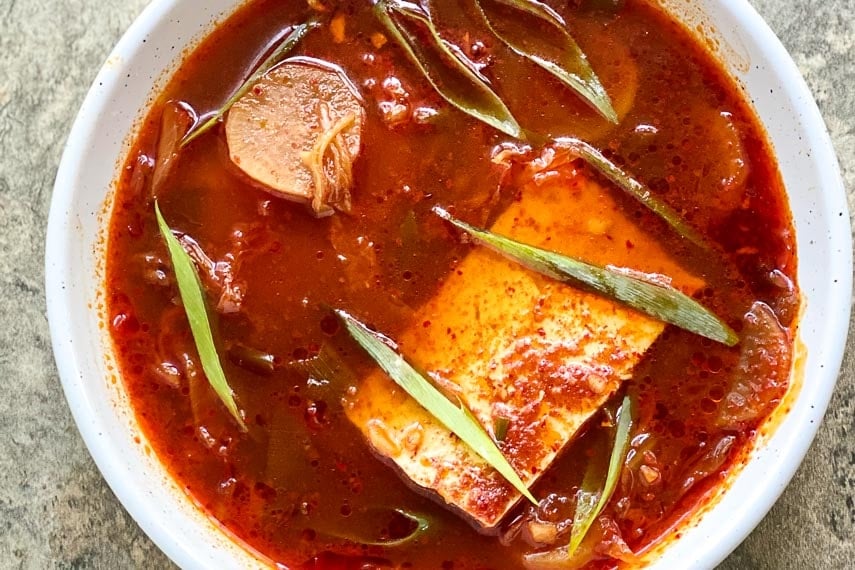

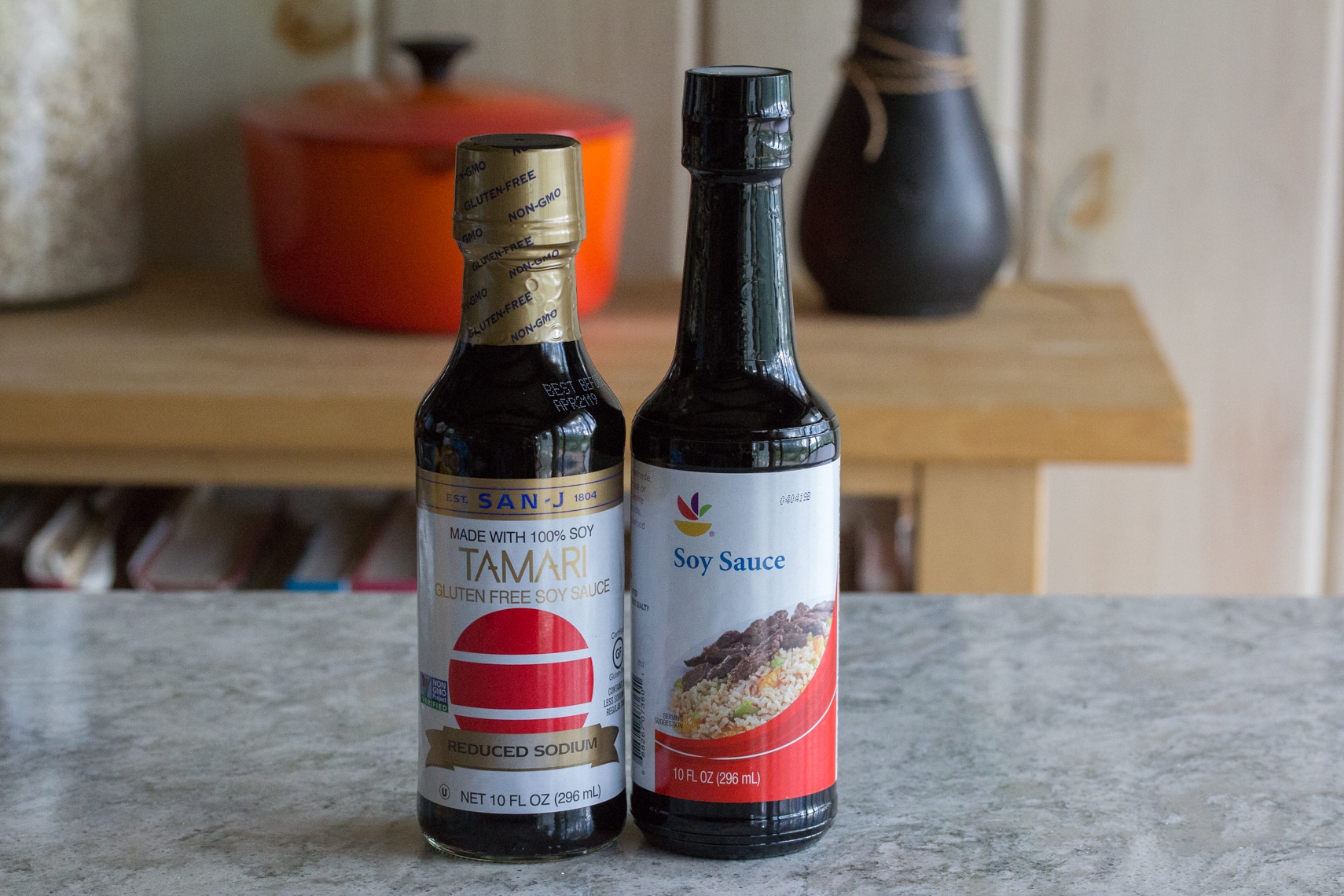






What about soymilk powder ? Would it be low in fodmaps ? Also, I’ve made soymilk at home, boiling the raw, dried beans for a few minites, then soaking the beans in fresh water for 12 hours, then using a Soyapower soymilk maker to finish the process. I haven’t seen anything yet as to how high or low it might be in fodmaps. Any thoughts?
Thank you !
Hi Dale, any soy milk made from whole beans, be it commercially prepared or homemade as you described, would be high in FODMAPs. In some places in the world you can find soy milk made from soy protein only, and that is low in FODMAPs. If the powder that you have is made from whole beans, it will most likely be high in FODMAPs. If it is made from soy protein, I would try it and see. But don’t combine with the homemade soy milk made from whole beans. Make sense? You might be able to find prepared soy milk made from soy protein. I am suspecting you are not in the U.S. Here we do not have any soy milks currently available made from the protein only, which makes it hard for FODMAPers!
I would assume the soy found in the FODY bars have been approved and tested for low FODMAP?
Jennifer, yes! All of FODY products have gone through rigorous tests and have received the Monash University Low FODMAP Certified stamp of approval. They are safe to eat in the portions recommended.
Are soy hotdogs ok on lowfodmap?
Hi Linda, soy, as you might have realized by now, can find its way into low FODMAP products as well as high FODMAP products. We would have to see a specific ingredient list but chances are it would not be a suitable product. Check out our article All About Hot Dogs, which might be of help.
Hi, what about soy icecream i.e. Swedish Glace? My Fodmap list says it is OK but it has glucose-fructose syrup in, which I have heard is bad, and also is soy, which some people say is not low-Fodmap. I am very confused.
Same goes for Alpro chocolate dessert – any clues? It is made from hulled soy beans and I am not sure if that is low-Fodmap or not.
Advice would be appreciated and resources to back it up if possible! Thanks, Megan
Hi Megan, I took a look at the Vanilla Swedish Glace. FYI glucose-fructose syrup, as opposed to anything labeled fructose-glucose, will have a larger proportion of glucose, so it should not be a FODMAP problem. What we don’t know much about is what they mean by “soybean powder”. This is most likely a FODMAP issue, if it is indeed whole, dry soybeans ground to a powder. Now, it is only in the amount of 2%, so that could swing it the other way towards tolerability. The list also mentions “flavouring” and the company would have to be contacted for more details. As for the Alpro, the ingredients mention 6% hulled soybeans. Again, if these are mature soybeans, that would be an issue, and this product has flavourings as well, and the same caveat applies as mentioned above. I am not sure about your market, but certainly here in the US we have many plant-based frozen desserts to choose from that would be low FODMAP and present less issues. THAT SAID, how do you feel when you eat these? Are you having reactions or not? THAT’s what’s important. You might like to read our article, What Is A Low FODMAP Serving Size? and also our article What If A Food Has Not Been Lab Tested?
Are soy derived mixed tocopherols okay? I just started FODMAP and these are in my omega 3 gelatin capsules.
Yes these are fine.
Hello, I am just starting a fodmap diet. I bought a flora probiotic that contains milk and soy. Are you aware of the soy causing an issue with this fodmap diet? Thank you so much! Cheers, Doug
A couple of things to consider…the diet is not a dairy free or soy free diet. Some soy products are low FODMAP; others are not. Some dairy is low FODMAP, some is not. And in addition, Monash recommends against adding any probiotics to your regimen during your Elimination or Challenge phases, as they can cloud your FODMAP response. You should review the use with your RD or medial professional.
Can you speak to whether the soy crisp in the protein bar I’ve been eating that is made from soy protein would be problematic? Is there any way to tell aside from contacting the manufacturer?
Proteins are not carbohydrates and therefore do not contain FODMAPs, but preparations are different. For instance, TVP, or Textured Vegetable Protein, which is soy based, is high FODMAP according to Monash – even at 1 tablespoon. There is no way to tell with this amount of info.
Dede,
Thank you so much for your reply! And I’m sorry I’m unable to figure out how to correctly present the spelling of your name. Both my maiden name and married name get butchered, so it has always been important to me to get the pronunciation and spelling of people’s names correctly.
Okay, on to the question at hand… In reading this article, I comprehended it to say that soy protein could be problematic for some people. But, the manufacturing of said soy protein might also play a role in how one digests it. So, I’m a little confused. 🙂
Two things about this protein bar:
(1) I have been consuming this protein bar almost everyday for breakfast for about 3 years. Only recently did I come across the soy issue and look further into what I’m consuming. I have not had this protein bar for the last three mornings. Within 24 hours, I could notice less of a bloated appearance to my abdomen (and less gas!). And, now, 3 days later, no bloated appearance at all! So, I’m thinking I’m someone who cannot tolerate soy protein (but maybe the isolated form?). But…
(2) This protein bar also lists agave syrup about midway down the ingredient list. I figured that would make it within the guidelines of the Monash app guidelines and be okay. Maybe not?
This is a NuGo brand protein bar. Should I call them and ask for more specifics about their soy protein makeup? Or should I just go with the improvement of my body appearance as a definitive about soy protein?
Thank you!
Beth
Beth, you are thinking critically, which is great. We don’t give individual medical opinions but here is what I would say: You are observing your body carefully and you should pay attention to it. I would give up the bars for a bit then maybe add a little agave to your coffee or tea and see what happens. Test it in isolation. Then, maybe try the bar again, You could also assess other soy protein products. It really could be this brand – the processing and the combo of ingredients that are just thrown you off. Somethings it is hard to pinpoint, but if a product triggers you – remove it. For Now. Read our article with Dr. B about intolerances. It is fascinating. Where your GI tract is now, is not necessarily where it will be 6 months from now. You might not have to give the bars up forever.
Dede,
Thank you, again, for taking the time to reply to my posts! I really, really do appreciate it! And you!
I will take a look at that article; thank you for sharing it with me.
I have not been a fan of coffee or tea, ever. Could I test out the agave syrup by simply consuming it straight from the bottle, within the low FODMAP amount allowed? Or is it too sickly sweet for that?
I am definitely removing these protein bars from my eating plan. I feel so much better without them. But, I will also try, at some point, another soy protein source to see if I react to it.
By the bye, I purchased yours and Kate’s cookbook a couple of years ago. It has been very helpful! But, obviously, I haven’t paid close attention to all aspects of the low FODMAP eating plan. I think I was pretty overwhelmed when I realized FODMAPs might be an issue and not everything sunk in to my brain in the beginning. I also didn’t peruse this web site near enough because now I’m almost obsessed with it! LOL! So much great information!!! Thank you to you and the team for putting it together, keeping it updated, and keeping it going! It is my new favorite source for all things FODMAP! 🙂
Thank you for the compliments! It is always gratifying to hear that we are indeed making a difference. Of course you can take the agave straight, or add to your oatmeal or whatever you know is not triggering symptoms. Good luck – you are attuned to your body and willing to do the homework so I am sure you will get better and better.
Again, thank you for your time in responding to my questions and concerns. Y’all ROCK!!! ❤
In the past I loved a milk substitute called “Better than Milk” which is made from dried tofu. Do you think it would be low FODMAP? INGREDIENTS: Tofu, (Water, Soy Solids, Calcium Sulfate), Maltodextrin, Modified Food Starch, Sunflower Oil, Calcium Blend (Calcium Carbonate, Tri-Calcium Phosphate), Natural Flavors, Sea Salt, Guar Gum, Xanthan Gum, Titanium Dioxide, Vegetable Mono and Diglycerides, Vitamin B12, Vitamin E (Mixed Tocopherols).
Hi there, a couple of questions and comments. The first question is, have you been drinking this and have you been tolerating it? If you have, then whether it would lab test as Low FODMAP does not really doesn’t matter. As to whether I think it is? I would put money on there being a Low FODMAP serving size of this, but how small the serving size would need to be I couldn’t tell you. I saw that the company also makes almond milk, oat and rice milk and all of those have Low FODMAP serving sizes. Is there a reason why you were sticking with the soy base?
Hello. I just today learned of both your website and the Acronym FODMAP. But I have been dealing with the symptoms of IBS for years. I decided to do some research into food types, notably different types of Soy products. I am wondering how harmful (Silk, etc.)Soy Creamer is to add to my coffee; I did not see that amongst other Soy items. Also, we have been eating certain meat substitutes for years that are of a soy base, such as a ground meat substitute or sausage alternatives, thinking I was being healthy. Was I wrong? Thank you.
Hi Robert, thank you for writing and welcome to the world of FODMAPs! As you are already seeing it is somewhat nuanced and complex, which is why the developers of the diet, Monash University, and we, suggest that it be undertaken with a registered dietitian. Soy is complicated and we have several articles addressing soy and this is because there are many soy products that are high FODMAP, but there are also several that are low and suitable even for the elimination phase. With soy in particular, Products made from whole soybeans are high FOD map and products made with soy protein isolate would be considered low FODMAP. Whether something is “healthy” not is going to depend on your needs as an individual. Many of the meat substitutes that are on the market right now are not sitting well with people with IBS from a digestive perspective. My suggestion to you would be to sign up for our newsletter. That will trigger a flurry of emails that will be sent to you right away, which contain links to what we think are our cornerstone documents. These emails are meant to be saved to refer to. After that the newsletter slows down to approximately twice a week and you will be brought new recipes, new articles written by our Monash trained registered dietitians and alerts two important things that are happening in the FODMAP world. Also, if you have not already, please download the Monash university smart phone app. The reasons why will be explained in the emails.
Are cliff chocolate peanut butter builders bars safe?
Hi Michael, all foods are safe unless contaminated, but we know what you mean. (We do have an article coming out addressing this terminology and why we do not use it). Please refer to our article on Energy Bars for a listing of over 100 bars, which are considered low FODMAP. Cliff bars contain chicory root (inulin) which is high FODMAP. This has nothing to do with their soy content.
First of all many thanks for such detailed analysis! Really helpful 🙂
In Europe we can buy both: soy milk and yoghurt from hulled soy beans. Do I understand correctly that both products are expected to have lower amount of FODMAP thus be better (at least in theory) tolerated by people sensitive to FODMAP?
Hi there. Any kind of whole soybean, hulled or unhulled, will yield a higher FODMAP product. For soy milk it should be made from isolated soy protein and these are near to impossible to find in the US.